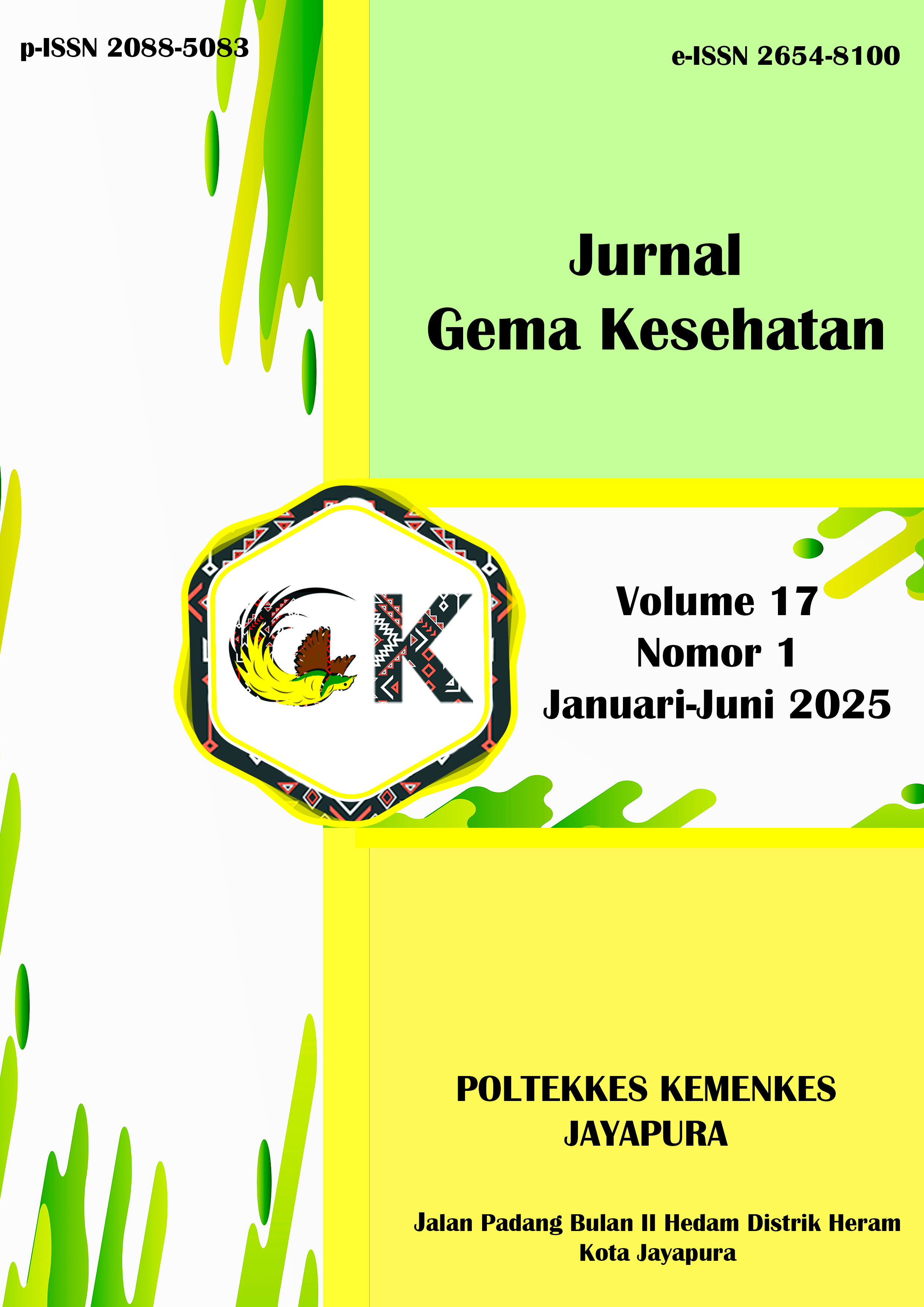UJI ORGANOLEPTIK BISKUIT ULAT SAGU (RHYNCHOPHORUS FERRUGINESUS) KHAS PAPUA
ORGANOLEPTIC EVALUATION OF SAGO GRUB (RHYNCHOPHORUS FERRUGINEUS) BISCUITS FROM PAPUA
Abstract
Ulat sagu (Rhynchophorus ferrugineus) merupakan salah satu sumber protein hewani yang banyak dikonsumsi oleh masyarakat di wilayah Papua dan Maluku. Mengingat kandungan proteinnya yang tinggi, diperlukan upaya untuk mengolah ulat sagu menjadi produk pangan yang lebih diminati secara luas, seperti biskuit. Penelitian ini bertujuan untuk mengevaluasi tingkat kesukaan panelis terhadap biskuit yang diformulasikan dengan ulat sagu melalui berbagai metode pengolahan. Penelitian menggunakan desain kuasi-eksperimen dengan tiga perlakuan, yaitu ulat sagu mentah, dikukus, dan disangrai. Uji hedonik dilakukan untuk menilai atribut warna, aroma, rasa, dan tekstur, dan data dianalisis perbedaannya menggunakan uji Kruskal–Wallis. Analisis statistik menunjukkan adanya perbedaan yang signifikan pada warna, aroma, rasa, dan tekstur antar ketiga formulasi biskuit ulat sagu (p<0,001). Hal ini menunjukkan bahwa perbedaan metode pengolahan berpengaruh signifikan terhadap tingkat kesukaan panelis dalam menilai biskuit ulat sagu. Biskuit yang diformulasikan dengan ulat sagu sangrai (F3) paling disukai panelis pada semua atribut sensori. Oleh sebab itu, metode sangrai direkomendasikan dalam pengembangan produk sejenis.
Kata kunci: Biskuit, Organoleptik, Papua, Ulat Sagu
Sago worms (Rhynchophorus ferrugineus) are a highly nutritious source of animal protein traditionally consumed in Indonesia's Papua and Maluku regions. To enhance their appeal to a broader consumer base, processing sago worms into familiar food products such as biscuits is a promising approach. This study evaluated consumer sensory preferences for biscuits formulated with sago worms processed using different methods. A quasi-experimental design was employed with three treatments: raw, steamed, and roasted sago worms. A hedonic test was conducted to assess sensory attributes, including color, aroma, taste, and texture, and data were analyzed using the Kruskal–Wallis test. Statistically significant differences were found across all sensory parameters among the three formulations (p<0.001). The essential differences observed suggest that the processing method is critical in shaping consumer acceptance of sago worm biscuits. Biscuits prepared with roasted sago worms (F3) received the highest overall sensory scores from panelists. These findings highlight the potential of the roasting method as a preferred processing technique in developing culturally rooted, protein-enriched snack products.
Keywords: Biscuit, Organoleptic, Papua, Sago Worm
Downloads
Published
How to Cite
Issue
Section
Copyright (c) 2025 Maxianus K Raya, Nia Budhi Astuti, Endah Sri Rahayu, Ferry Wicaksono

This work is licensed under a Creative Commons Attribution-ShareAlike 4.0 International License.
Copyright Notice Authors who publish with Gema Kesehatan (GK) agree to the following terms: Authors retain copyright and grant Gema Kesehatan (GK) right of first publication with the work simultaneously licensed under a Creative Commons Attribution License CC-BY-SA
Most read articles by the same author(s)
- Geovany Idilha Putri, Sanya Anda Lusiana, Budi Kristanto, Nia Budhi Astuti, ORGANOLEPTIC PROPERTIES OF LOHAN FISH MEATS , GEMA KESEHATAN: Vol. 14 No. 1 (2022): Juni 2022



















